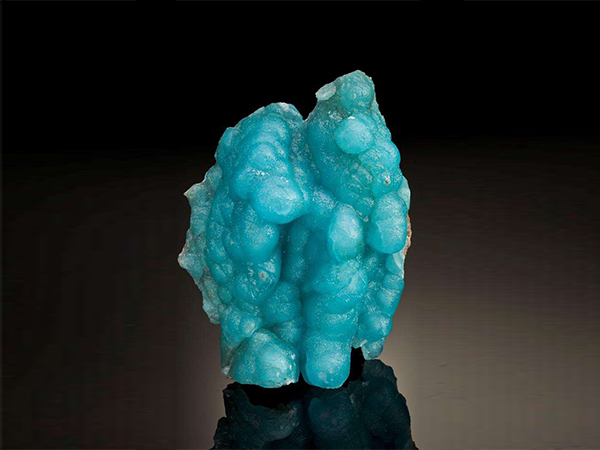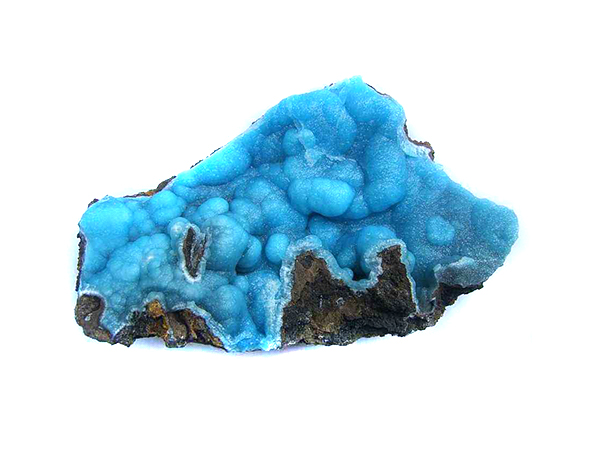HEMIMORPHITE

Introduction.

Silicate is the rarer of the two, due to the semi-crystalline development of the crystal, it was named heteropolar ore.This unusual form, which is typical of only some minerals, means that crystals terminate in different faces.The most common are crystalline and lamellar structures, as well as lumpy, granular, circular, and reniform aggregates, concentric streaks or fine needles, fibrous or cystoliths, and rarely fan-shaped clusters.

Chemical composition: Zn4(H2O)[Si2O7](OH)2.Usually also contains Pb, Fe, Ca and so on.Crystal water is lost when the temperature rises to 500°C;At higher temperatures, the water is lost and the crystal structure is destroyed.
Identification characteristics: the heteropole ore is similar to the zinc ore, the difference is that acid does not bubble.The distinction with grape stone is specific gravity is bigger;Heat in a closed tube releases water.It dissolves in acids and produces a gel, which is hard to melt.

Main color: blue
Other colors: white, brown, colorless, yellow, green, purple
Gloss: glass luster, silk luster, pearl luster, asphalt luster
Hardness :4.5 to 5.0
Concentration :3.30 to 3.50
Cleavage: faultless
Rift: shell - shaped fracture, stagger - shaped fracture
Crystal structure: rhombic, platelike, protuberant assemblage
Optical properties of
Transparency: transparent, translucent
Refractive power: 1.613 to 1.635
Birefringence :0.022, clear, positive biaxial crystal
Double image: it is
Dispersion: 0.020 (0.013)

A certain number of polychromatic colors :1
Fluorescence: variable, depending on the origin, fluorescence determined by metal ions
Occurrence of origin
occurrence
It is a secondary oxidized mineral produced in vein form.Usually produced in limestone with sphalerite, zinc, white lead, limonite and other symbiosis, sometimes fluorite, zinc, calcite, galena pseudoluminescence.
place of origin
USA, Mexico, Congo, Germany, Austria, etc.China's yunnan, guangxi, guizhou and other provinces (regions) also have output.
